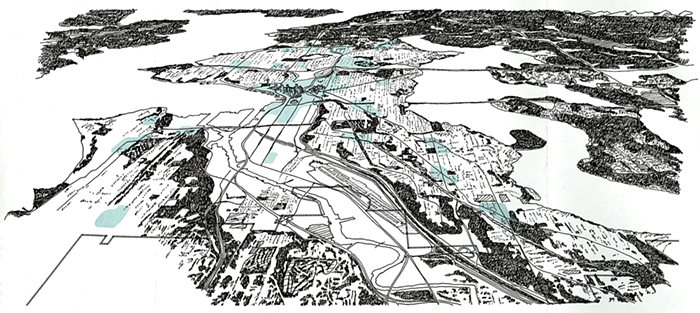My interview with Low guitarist/vocalist Alan Sparhawk is happening as former Donald Trump "fixer" Michael Cohen is testifying before Congress. So it seems apropos to ask which Low song he'd play to facilitate Trump's resignation.
After some thought, he responds "Breaker," off Drums and Guns, "because lyrically it's this plea for an end to contention and war. It's a look at ourselves: What are we doing? Can we stop this?"
"A lot of the new record [the Sub Pop–released Double Negative]," Sparhawk continues, "is more about looking at each other and trying to figure out how we begin to hope again."
Hope cropped up on Low's 1994 debut LP and slowcore classic, I Could Live in Hope. It's still my favorite release by the Duluth, Minnesota, trio, which also includes drummer/vocalist Mimi Parker and bassist Steve Garrington. But anyone hoping they'd repeat the intimate twilight splendor of that work will be disappointed.
Nowhere is Low's zest for change starker than on Double Negative. Produced with BJ Burton (not the Danger Mouse guy), the songs often come coated with gritty distortion and electronic glitchery more common with the noise and IDM genres than the sensitive, methodical songcraft on which Low has built their rep. Paradoxically, Low's most "difficult" record has earned them a cover story with English magazine the Wire, eighth place in the Village Voice's Pazz & Jop poll, and an 86 Metacritic rating.
The overwhelmingly positive response to Double Negative surprised Sparhawk; he thought it "seemed a little too weird" for such acceptance. But he attributes its momentum to timing and listeners' yearning for music "that reflects what's going on in the world."
The opening three songs—"Quorum," "Dancing and Blood," and "Fly"—brashly thrust Low's new approach into fans' ears. So much so, some may think there's a mastering error. Nope, it's supposed to sound that fucked up. There's more low-frequency violence à la Autechre and Porter Ricks here than the slowcore balladeering that Low fans have come to expect. Sparhawk and Parker's plaintive voices often sound warped, loaning them even more pathos than usual. The drums often boom like meticulously deployed bombs. This is not your father's Low.
What drew Low to immerse these songs in distortion? Sparhawk jokes that "it might be a juvenile carryover" from his more raucous youth. Then he delves deeper. "Ever since I was a child, I remember the little noises in my head that would coincide with different thoughts for me, and they were always distorted sounds. Distortion has always been a reflection of human existence, a kind of bashing against reality. It's the sound of tension, of two things rubbing against each other uncomfortably."
But then Low shock again with "The Son, the Sun" and "Always Up," gorgeous, gaseous pieces of ambient music, and the hushed, spangly ballad "Dancing and Fire," which harks back to their debut LP... even as Sparhawk sings, "It's not the end, it's just the end of hope."
He says, "There was a realization that the stuff that's most exciting on this record was where we went really far out and found something new and interesting. We wanted to really go all the way with it."




















